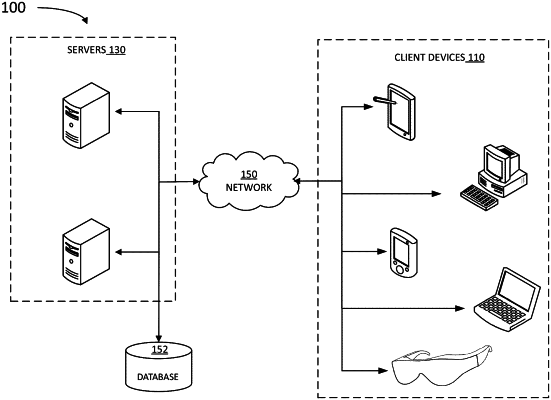| CPC G09G 3/003 (2013.01) [G02B 27/0172 (2013.01); G02B 2027/0118 (2013.01); G09G 2300/026 (2013.01); G09G 2320/0233 (2013.01); G09G 2320/0626 (2013.01); G09G 2340/12 (2013.01)] | 20 Claims |

|
1. A computer-implemented method, comprising:
coupling a first image portion into a waveguide in a headset display for an artificial reality device, the first image portion provided by a first array of pixels;
coupling a second image portion into the waveguide in the headset display, the second image portion provided by a second array of pixels;
directing the first image portion out of the waveguide through an eyebox delimiting a location of a user's pupil;
directing the second image portion out of the waveguide through the eyebox; and
tiling, in a user's retina, the first image portion and the second image portion to form an image having an extended field of view, wherein the extended field of view includes an overlapping area comprising a light provided by pixels at an edge of the first array of pixels and a light provided by pixels at an edge of the second array of pixels.
|